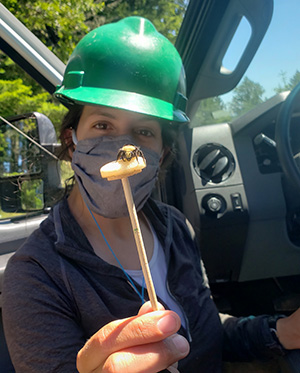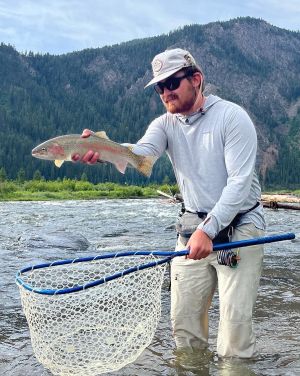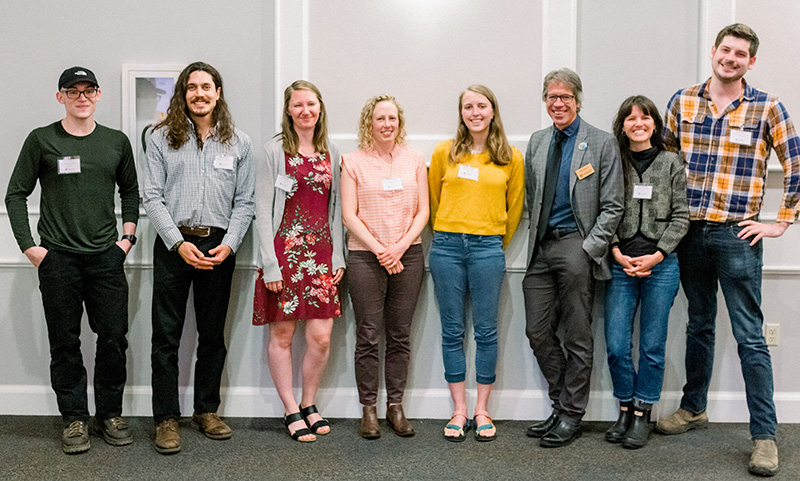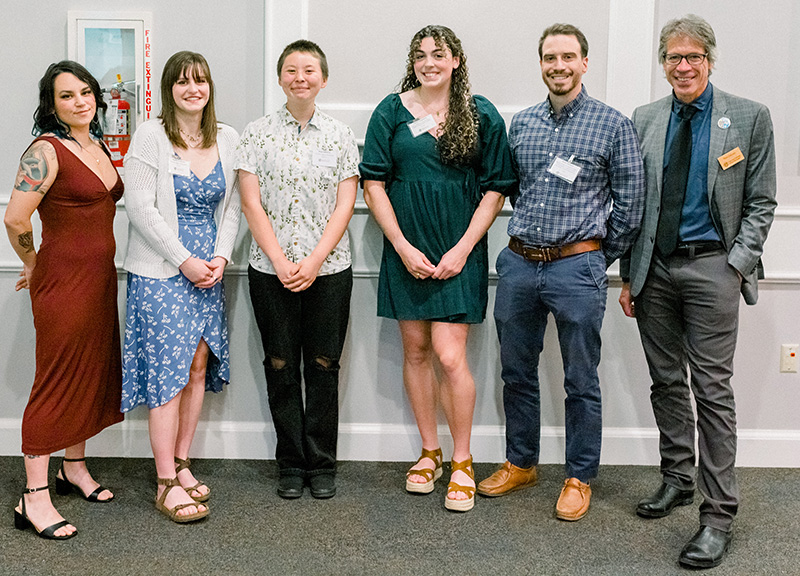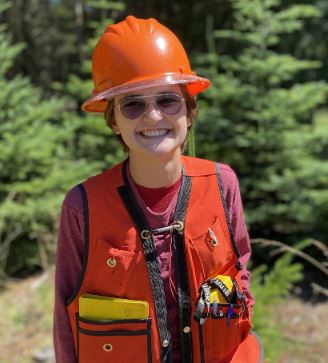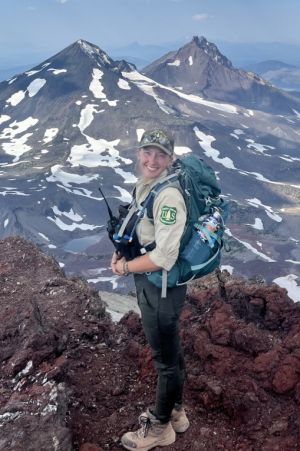
Destiny Pauls is a natural resources student focusing on conservation law enforcement who will be graduating in Spring 2023. She spent her summer in central Oregon as a wilderness ranger for the Deschutes National Forest, in partnership with AmeriCorps and Heart of Oregon Corps.
What was the focus of your summer job?
My position focused on stewarding in our wilderness areas within the forest, educating recreationists about the new Central Cascades Wilderness Permit system, checking for those permits, and instilling a few essential Leave No Trace principles for their journey. I was able to work in the Three Sisters Wilderness, the Mt. Jefferson Wilderness, Mt. Washington Wilderness, and the Diamond Peak Wilderness.
Describe the day-to-day of your job
I often spent my days geared up in uniform hiking our trails and interacting with the public. Early in the season with the late snow, our crew assisted the Trails crew with a bit of trail maintenance and helped crosscut and lop out a lot of downed trees and vegetation, then focused primarily on getting daily counts of permitted recreationists in the wilderness, counting cars at trailheads, hiking in the backcountry, cleaning up campsites of litter, and trying to disperse the impact from humans. It was such a dream to work for an agency I respect, admire, and aimed at working in an area that holds such a special place in my heart (and ankle – I have the Three Sisters tattooed there!). I am from southern Idaho and have lived in the Willamette Valley for the past 10 years and have driven that highway, recreated in that forest, and climbed those peaks during that time, so to see it come full circle- dream to reality was pretty amazing and couldn’t have asked for a better place and way to do what I love.
How will this job help you in your future career?
My focus in the natural resources program is conservation law enforcement, with the goal of being what I like to call a “tree cop” or wildland law enforcement officer in a future career. This summer job provided many opportunities to shadow other forest service programs, in which I was fortunate to experience several ride alongs with our forest service law-enforcement officers. This gave me a real face to face glimpse of what that position entailed and that was one of the primarily goals of what I was looking to get out of this experience. Lastly I want to share how hard it was for me to leave this position as I wished it could have continued past a seasonal position (future permanent job here I come!) but I will fondly look back at the people I worked alongside, the places I explored, and the connections I made within the industry, my university, and in some of the most beautiful wild places Central Oregon has to offer.

